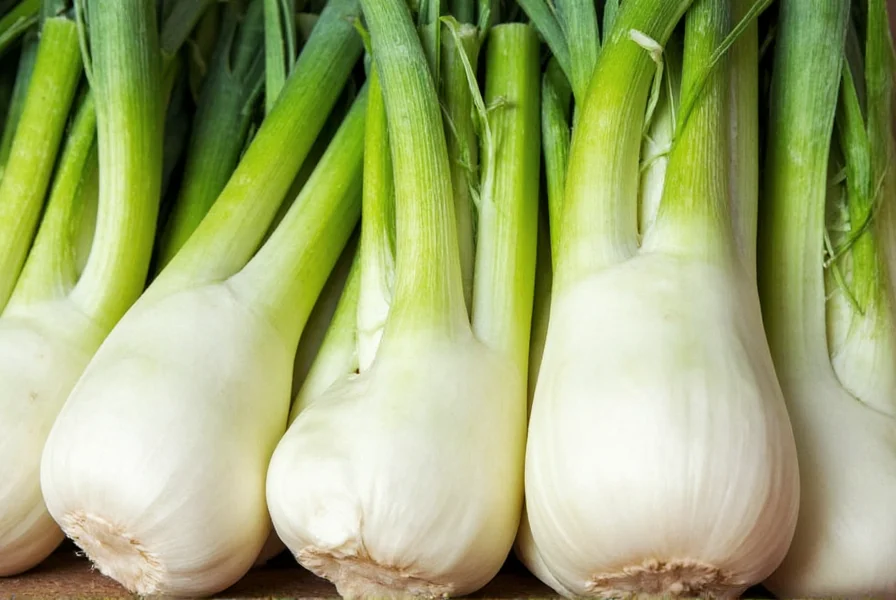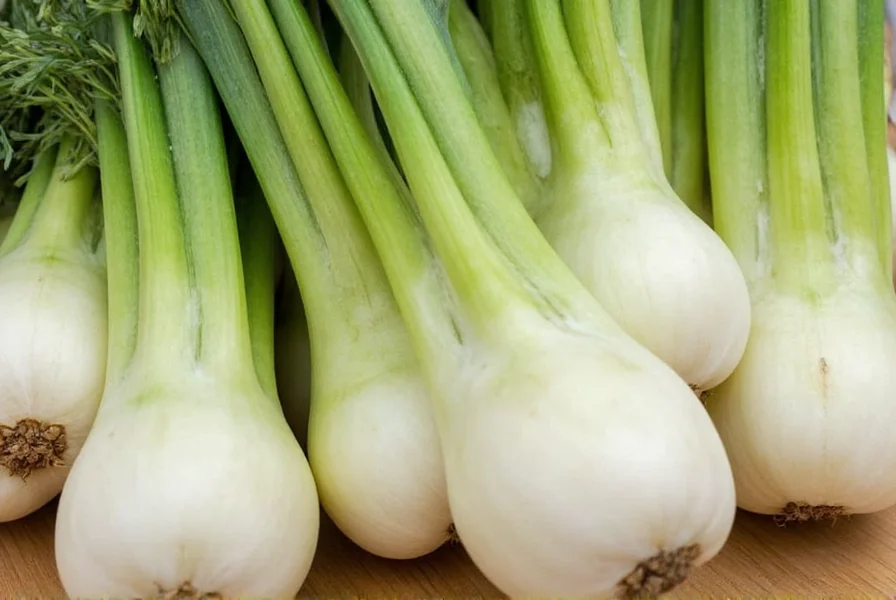Fennel bulb represents one of the most versatile yet underutilized vegetables in modern cooking. This aromatic vegetable offers a unique flavor profile that bridges the gap between sweet and savory applications. Understanding how to select, prepare, and incorporate fennel bulb into your culinary repertoire can transform ordinary dishes into extraordinary culinary experiences.
Understanding Fennel Bulb Characteristics
Fennel bulb features a distinctive layered structure with a firm, crunchy texture when raw. Its flavor profile combines subtle licorice notes with fresh, herbal undertones. When selecting fennel bulbs at the market, look for firm, heavy specimens with bright white color and tightly packed layers. Avoid bulbs with brown spots, splits, or flowering tops, which indicate age and potential toughness.

Fennel Bulb vs. Other Fennel Components
Many home cooks confuse the different parts of the fennel plant. The bulb refers specifically to the rounded base that grows underground. Above this grows the stalk and delicate feathery fronds (used as fresh herbs), while fennel seeds come from the flower heads. Each component offers distinct flavors and culinary applications:
| Fennel Component | Flavor Profile | Primary Culinary Uses |
|---|---|---|
| Fennel Bulb | Mild anise, crisp, slightly sweet | Raw salads, roasted, grilled, braised |
| Fennel Fronds | Delicate anise, herbaceous | Garnish, salad ingredient, herb blend |
| Fennel Seeds | Strong licorice, warm, earthy | Spice blends, baking, sausage making |
Selecting and Storing Fennel Bulb Properly
When choosing fennel bulbs, prioritize specimens that feel heavy for their size with no soft spots. The stalks should appear fresh and green, not wilted. For optimal storage, remove any rubber bands or ties, cut off the stalks (reserving fronds for garnish), and store the bulb in a perforated plastic bag in your refrigerator's crisper drawer. Properly stored fennel bulb maintains quality for 7-10 days.
For extended storage, consider slicing the bulb and blanching it for 2 minutes before freezing. This preserves texture better than freezing raw fennel. Many professional chefs recommend storing fennel away from ethylene-producing fruits like apples and bananas, which can accelerate spoilage.
Mastering Fennel Bulb Preparation Techniques
Preparing fennel bulb requires specific techniques to maximize its culinary potential. Start by trimming the stalks about 1 inch above the bulb and cutting off the root end. Remove any tough outer layers if they appear dry or discolored. To clean thoroughly, cut the bulb in half vertically and remove the tough core at the base.
For raw applications like salads, slice the bulb thinly using a mandoline or sharp knife. The crisp texture holds up well in slaws and salads, especially when dressed with citrus-based vinaigrettes that complement its natural sweetness. When cooking fennel bulb, remember that heat transforms its flavor profile—raw fennel offers bright, crisp notes while cooked fennel develops complex caramelized sweetness.
Culinary Applications of Fennel Bulb
Fennel bulb shines across multiple cooking methods. Raw, it adds refreshing crunch to Mediterranean salads and pairs beautifully with citrus, olives, and sharp cheeses. When roasted, the natural sugars caramelize, creating depth that complements pork, chicken, and seafood dishes. Braised fennel bulb becomes meltingly tender and absorbs surrounding flavors while maintaining its distinctive character.
Professional chefs often incorporate fennel bulb into broths and stocks for added complexity. The bulb works particularly well in Mediterranean cuisine, where it features prominently in dishes like Italian finocchio alla griglia (grilled fennel) and French bouillabaisse. For home cooks exploring fennel bulb recipes, start with simple preparations like roasting wedges with olive oil and herbs before experimenting with more complex applications.
Nutritional Benefits of Fennel Bulb
Beyond its culinary versatility, fennel bulb offers impressive nutritional benefits. A single cup of raw fennel bulb contains just 47 calories while providing 7 grams of dietary fiber, 14% of your daily vitamin C needs, and significant potassium. The vegetable also contains flavonoids and antioxidants that support digestive health and reduce inflammation.
Unlike fennel seeds, which contain higher concentrations of certain compounds, the bulb offers a more subtle nutritional profile focused on hydration and fiber. Its natural diuretic properties make it valuable for maintaining healthy fluid balance, while the fiber content supports gut health. Incorporating fennel bulb into your regular diet provides these benefits without overwhelming your system with strong flavors.
Common Substitutions for Fennel Bulb
When fennel bulb isn't available, several alternatives can approximate its flavor and texture. Celery provides similar crunch with less sweetness, while bok choy offers comparable texture with milder flavor. For dishes where the anise note is essential, adding a small amount of fennel seeds (1/8 teaspoon per bulb) to celery or onion can mimic fennel's distinctive profile.
Remember that substitutions work best in cooked applications—raw fennel's unique crispness and flavor are difficult to replicate exactly. When substituting in recipes, consider whether the recipe relies primarily on fennel's texture (use celery or jicama) or its flavor (add a touch of anise seed or star anise).
Frequently Asked Questions
Can you eat fennel bulb raw?
Yes, fennel bulb can be eaten raw and is excellent in salads, slaws, and as a crudité. When raw, it has a crisp texture and mild anise flavor that pairs well with citrus dressings. Slice it thinly for the best texture in raw applications, and consider soaking sliced fennel in ice water for 15-20 minutes to enhance its crispness.
How do you remove the tough core from fennel bulb?
To remove the tough core, first cut the bulb in half vertically from top to bottom. Then, make a small triangular cut at the base of each half to remove the hard core portion. This tough center section doesn't soften during cooking and can be unpleasant to eat, so proper removal is essential for the best culinary results.
What are the best cooking methods for fennel bulb?
Fennel bulb excels with multiple cooking techniques. Roasting brings out its natural sweetness and creates caramelized edges. Braising yields tender results ideal for soups and stews. Grilling imparts smoky notes that complement its anise flavor. Sautéing works well for quick side dishes. Raw applications showcase its crisp texture in salads. Each method transforms the flavor profile while maintaining the vegetable's distinctive character.
Does cooking fennel bulb eliminate the licorice flavor?
Cooking transforms but doesn't eliminate fennel bulb's characteristic flavor. Raw fennel has a more pronounced anise note, while cooking mellows this into a subtle sweetness. The longer you cook fennel bulb, the more the flavor integrates with other ingredients, becoming less distinct but still contributing complexity. For those sensitive to licorice flavors, pairing fennel with acidic ingredients like lemon can help balance its natural profile.
Can you freeze fennel bulb?
Yes, you can freeze fennel bulb, but proper preparation is essential. First, clean and slice the bulb, then blanch in boiling water for 2 minutes before transferring to ice water. Drain thoroughly and freeze in airtight containers. Frozen fennel works best for cooked applications like soups and stews, as the texture becomes softer after thawing. For raw applications, fresh fennel is always preferable to frozen.











 浙公网安备
33010002000092号
浙公网安备
33010002000092号 浙B2-20120091-4
浙B2-20120091-4